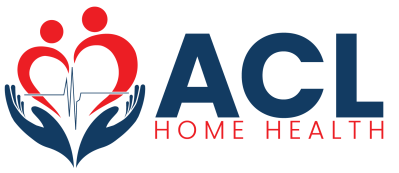Falls can have profound consequences, especially for older adults. In our pursuit of a safe and supportive community, it’s crucial to address fall prevention. This blog aims to be a guiding light, offering practical insights and tips on creating an environment that reduces the risk of falls. At ACL Home Health, we believe in empowering individuals to maintain independence, and fall prevention is a key aspect of that mission.
Understanding the Impact of Falls:
Falls can lead to serious injuries, affecting not only physical health but also diminishing confidence. Understanding the common causes of falls is the first step toward effective prevention. Factors such as medication side effects, poor vision, and environmental hazards can contribute to the risk.
Creating a Fall-Resistant Environment:
Home Assessment:
Evaluate your living space for potential hazards such as loose rugs, uneven flooring, or poorly lit areas. Make necessary modifications to create a safer environment.
Regular Exercise:
Engage in activities that improve balance and strength. This could include simple exercises like walking, yoga, or Tai Chi. Consult with a healthcare professional for personalized recommendations.
Medication Management:
Regularly review medications with your healthcare provider. Some medications can contribute to dizziness or imbalance. Ensure you are aware of potential side effects.
Vision Check-ups:
Schedule regular eye check-ups to maintain optimal vision. Poor eyesight can significantly increase the risk of falls.
Proper Footwear:
Wear supportive and properly fitting shoes. Avoid high heels or slippery soles, especially in wet or uneven conditions.
Safety Equipment:
Consider installing handrails, grab bars, or other safety equipment, particularly in areas like bathrooms or staircases.
Nutrition and Fall Prevention:
Adequate Nutrition:
Ensure a balanced diet rich in calcium and vitamin D to support bone health. Strong bones are crucial for preventing fractures in the event of a fall.
Hydration:
Dehydration can lead to dizziness and weakness, increasing the risk of falls. Stay adequately hydrated, especially in warmer weather.
Educating and Empowering:
Education is a powerful tool in fall prevention. By understanding the risks and implementing proactive measures, individuals can take charge of their safety. Share this information with loved ones, friends, and community members to create a culture of awareness.
Preventing falls is a shared responsibility that extends beyond individual efforts. At ACL Home Health, we believe in fostering communities that prioritize safety and well-being. By incorporating these practical strategies, we can collectively create spaces where individuals can age with dignity and independence.
Remember, fall prevention is not just about avoiding accidents; it’s about promoting a lifestyle that supports health and vitality. Let’s step into safety together.

